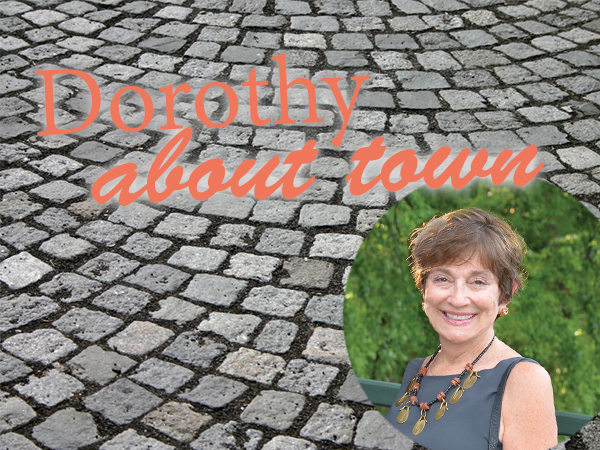Did you know that a grizzly bear can answer to its name? Or that it can be taught to stand, sit and open its mouth on command? I learned those interesting tidbits and more at the preview of the Saint Louis Zoo’s new Grizzly Ridge habitat. Even though I’m a little nostalgic about the previous enclosure (innovativly built in 1917 as only the second ‘open’ exhibit in the U.S.), this one is better for the bears—and probably for the humans, too.
For one thing, it’s twice the size of the old grizzly exhibit, so the bears have more roaming space. And Huck and Finley (the names of our new grizzlies) have real grass to lumber along—not cold concrete. Instead of a small watering hole, they now have a running stream with a waterfall. And in keeping with the latest in ursine personal development, our zoo has undertaken an entire enrichment program for the two bears. They have balls to toss, barrels to explore, and logs drilled with holes full of honey and peanut butter so they can learn to dig for food, just like their wild counterparts. And I’m sure the zoo will keep upping its game, since I have it on good zoo authority that grizzlies are smarter than dogs.
Best of all for us, the new enclosure has glass panels that retract so visitors can, on occasion, watch up-close-andpersonal interactions through mesh screening as the bears respond to commands, including placing their hips up to the mesh to receive vaccinations—and getting rewarded for it! All this is pretty exciting when you consider that for the past 100 years, all we ever saw them do was lumber from one side of their space to the other, if we saw them at all.
The grizzlies have earned all this special treatment, I’ve been told, since large carnivores are the rock stars of the zoo world. And grizzlies have been part of that world in St. Louis for a long time. Which brings us to another innovation at the new exhibit, an educational shelter where zoo personnel give presentations and show videos about how humans can better coexist with bears. Missouri’s black bear population is about 300 and growing. Zoos and animal lovers want to ensure that we know to do things like place trash in bearproof cans and hoist food high out of reach in tamper-proof food bags when camping.
They believe this world is big enough for both bears and humans, and we wouldn’t want to prove them wrong. It will be a sad day for the bears if that happens. And for us








